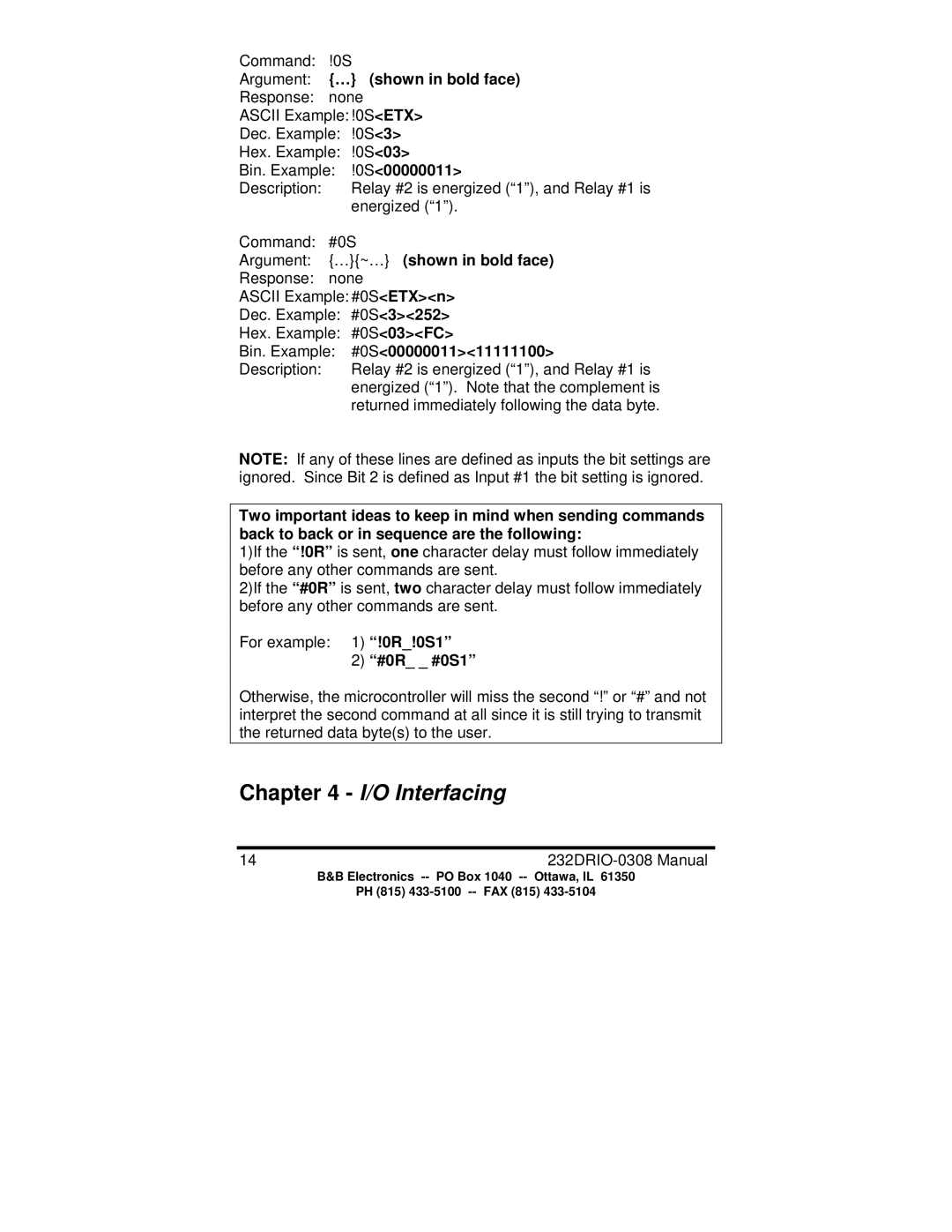
Command: !0S
Argument: {…} (shown in bold face)
Response: none
ASCII Example: !0S<ETX>
Dec. Example: | !0S<3> | |
Hex. Example: | !0S<03> | |
Bin. Example: | !0S<00000011> | |
Description: |
| Relay #2 is energized (“1”), and Relay #1 is |
|
| energized (“1”). |
Command: #0S | ||
Argument: | {…}{~…} (shown in bold face) | |
Response: | none | |
ASCII Example: #0S<ETX><n> | ||
Dec. Example: | #0S<3><252> |
Hex. Example: | #0S<03><FC> |
Bin. Example: | #0S<00000011><11111100> |
Description: | Relay #2 is energized (“1”), and Relay #1 is |
| energized (“1”). Note that the complement is |
| returned immediately following the data byte. |
NOTE: If any of these lines are defined as inputs the bit settings are ignored. Since Bit 2 is defined as Input #1 the bit setting is ignored.
Two important ideas to keep in mind when sending commands back to back or in sequence are the following:
1)If the “!0R” is sent, one character delay must follow immediately before any other commands are sent.
2)If the “#0R” is sent, two character delay must follow immediately before any other commands are sent.
For example: 1) “!0R_!0S1”
2)“#0R_ _ #0S1”
Otherwise, the microcontroller will miss the second “!” or “#” and not interpret the second command at all since it is still trying to transmit the returned data byte(s) to the user.
Chapter 4 - I/O Interfacing
14 | |
B&B Electronics | PO Box 1040 |
PH (815)
